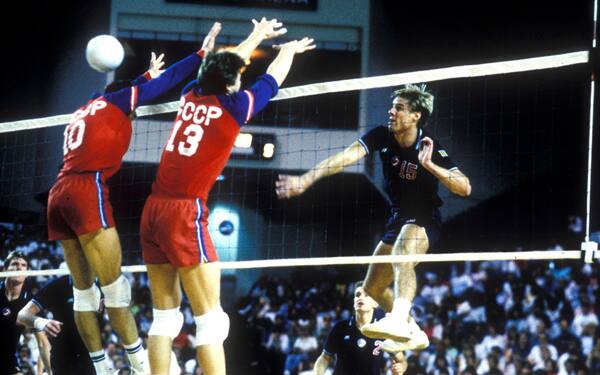
Originally published in VolleyballUSA, Summer 2011 issue.
The most effective learning principles are invariably the most basic. "The game teaches the game" is an appropriate mantra that we should all remember as we strive for improvement as players and coaches.
I do clinics for coaches and kids on a regular basis - both indoors and on the beach - emphasizing the importance of letting younger players experience and learn our great sport while on the court.
If a picture is worth a thousand words, seeing and feeling the proper contact of a forearm pass tops a 2,000-word lecture from a coach every time.
Certainly, a degree of proper coaching is essential to player development. I credit much of my success to a strong fundamental background I gained while playing at the beach with my father beginning at the age of six. Rick Olmstead, who was my high school coach in Santa Barbara, expanded on that base, and so did the legendary Al Scates while I was at UCLA. Both my U.S. National Team coaches, Doug Beal and Marv Dunphy, furthered my development with their knowledge of the game. I'm still learning today as I work with Hugh McCutcheon, our great U.S. Women's National Team coach [2009-12].
Verbal instruction, however, isn't a substitute for the precious court time that younger players need. As coaches, we should let them play more and sit and listen less.
I thoroughly enjoy working with beginners and helping them experience the satisfaction of controlling the ball for the first time. I recently conducted a free clinic at Carmel Beach on the Monterey Peninsula of California, a beautiful setting with the world famous Pebble Beach Golf Links in the background.
The kids, mostly younger indoor players with varying degrees of experience, understandably wanted to spend the allotted time playing, so I had them do a modified competition in a rotating king/queen-of-the-court format. This allows for strategic instruction to be provided during quick stoppages of play, but it doesn't disrupt the fun. This "game" should be played with the smallest teams possible appropriate to age and skill level.
Experienced 16-year-olds, for example, should be reasonably comfortable playing 3 versus 3. The goal of playing with smaller groups is to maximize player (not coach) contacts per minute. They'll get more practice making the ball go where they want - ball control - and learn how mastering that aspect of the game can help you elevate the performance of your teammates. Smaller groups, whether indoors or on the beach, are a great way to acquire the ball-control skills that will make the game more enjoyable for a lifetime.
A great example of willpower in volleyball is the discipline it takes to consistently cover the hitter. Everybody knows that you’re supposed to do it, and it’s something that most players do most of the time. Borrowing from the posture experiment, here’s a challenge for young players to try in the new year: Focus on covering your hitters for the next week. How often can you remember to be ready when your teammates take a swing? Is it more than last week? And might that help you exert more self-control in other parts of your game?
